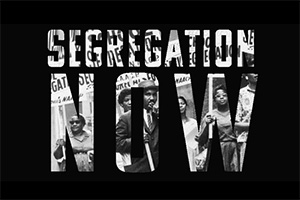Dear Readers,
In 1954, Chief Justice Earl Warren, in his landmark Brown v. Board of Education opinion that sought to outlaw segregation in America’s schools, wrote, “Education is perhaps the most important function of state and local governments.”
“It is a principal instrument in awakening the child to cultural values, in preparing him for later professional training, and in helping him to adjust normally to his environment,” Warren wrote. “In these days, it is doubtful that any child may reasonably be expected to succeed in life if he is denied the opportunity of an education. Such an opportunity, where the state has undertaken to provide it, is a right which must be made available to all on equal terms.”
Today, the equal educational terms the Supreme Court hoped for – indeed, demanded – are imperiled again.
Nikole Hannah-Jones of ProPublica has spent the last year investigating the resegregation of the country’s schools, and her collaboration with The Atlantic, “Segregation Now,” represents one of ProPublica’s most ambitious reporting efforts.
Almost everywhere in the country, Hannah-Jones found, the gains of integration have been eroded. And nowhere has that been more powerfully and disturbingly true than in the South – once home to both the worst of segregation and the greatest triumphs of integration. Freed from the federal oversight that produced integration, schools districts across the 11 former states of the Confederacy have effectively re-instituted segregation for large numbers of black students, in practical terms if not in law.
“Segregation Now” focuses on the Tuscaloosa, Ala., city school district, and its fleeting experience with the challenges and virtues of integration. The story is told through the three generations of one African-American Tuscaloosa family, the Dents.
This week’s online presentation – the article appears in print in the May issue of The Atlantic – marks what we hope is a provocative and enlightening experiment for ProPublica and our readers.
The presentation includes: Hannah-Jones’s extraordinary 9,000-word article; a beautiful and arresting collection of photographs taken by students in Tuscaloosa high schools; a partnership with Michele Norris’s “Race Card Project” and NPR’s Morning Edition; an interactive timeline tracing the arc of segregation, integration and resegregation; a feature that will provide the first-ever opportunity for readers to look up whether their districts remain under federal desegregation orders and just how integrated their school districts are today; and a moving, short documentary film by the award-winning Maisie Crow.
Because of the size and importance of this project, we have decided to offer it to our readers in discrete chapters over three days. We believe this format will allow our readers to best absorb and appreciate our reporting. That said, starting today, anyone interested in reading Hannah-Jones’s article in its entirety — either taken by the story or eager to consume it for professional reasons — can do so by simply clicking here.
We believe the importance of this story cannot be overstated, and we, as ever, encourage our readers to both spread the word widely and offer us candid feedback about the reading experience or where next to take our reporting. Hannah-Jones will throughout 2014 continue to report on the question of segregation and America’s schools.
— Steve Engelberg and Robin Fields


















